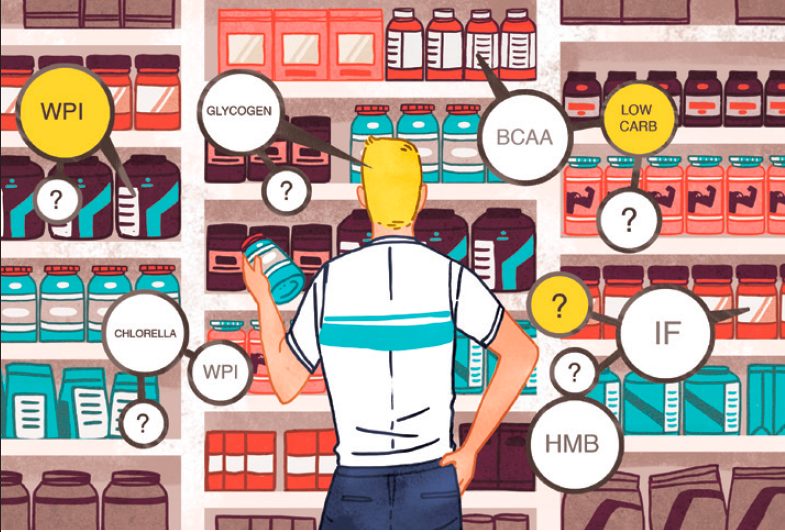Food talk: Some quick definitions to commonly seen nutrition terms
These terms are commonly found on sport nutrition products' ingredient lists. Here's what they mean and a description of their function in nutrition.


— By Pip Taylor
Nutrition is a key component of both sports performance and health and most of us have a desire to eat “better” to meet improvements in both. This appetite for information and understanding, coupled with our expanding knowledge in the science of nutrition, has led to a proliferation of information. In order to explain the mechanism behind the hows, whys and whats of nutrition and athletic performance, it is necessary to delve into the complex worlds of physiology, biochemistry and anatomy. But it’s a shame when some key messages can get lost amongst the scientific jargon and terminology.
Here’s a quick guide to some of the most commonly seen terms you might see scattered through nutrition articles or across the back of sports products and how to apply them to your own nutrition goals. When in doubt, though, speak to a qualified sports nutritionist.
BCAA: An acronym for branched chain amino acids of which there are three – leucine, isoleucine and valine. Amino acids are known as the “building blocks” of protein and BCAAs are also essential amino acids, meaning they cannot be synthesized in the body and must come from dietary sources. Because they aid in building muscle mass and strength by stimulating protein synthesis and prevent muscle breakdown, they are often used in sports supplements targeted at athletes aiming to “bulk up.” Endurance athletes may also benefit as BCAAs are thought to act as a fuel source during exercise, help maintain muscle mass and strength (even when dropping body weight) and reduce feelings of fatigue.
WPI: Whey Protein Isolate. Whey protein is derived from milk proteins and, as a High Biological Value (HBV) protein, it is readily absorbed, making it ideal in the post exercise recovery period. Many recovery bars and drinks are formulated with whey protein. Whey is naturally rich in all three BCAAs, especially the critical leucine. There are several forms of whey protein, though, and you can expect to pay differing amounts depending on that type you choose. Whey protein concentrate is generally 70 to 80 per cent protein by weight and will contain small amounts of both lactose and fat. Whey protein isolate is more expensive, but is around 90 per cent protein.
Chlorella: It might sound frightening, and not something you would choose to ingest, but this ingredient is making a move from the health food aisle over to the sports products. Chlorella is a single-celled type of green algae (like spirulina), containing large amounts of chlorophyll and has high nutritional value. It is rich in phytonutrients, amino acids, beta-carotene, potassium, phosphorous biotin, magnesium and B vitamins and may help aspects of health such as immune function and heart health and, consequently for athletes, recovery and performance.
Glycogen: The stored form of glucose, glycogen is found in the liver as well as our muscles. When the body needs a quick boost of energy, or when the body isn’t getting glucose from food, glycogen is broken down to release glucose into the bloodstream to be used as fuel for the cells. Muscular glycogen is limited and can only be used within those muscles – in other words, glycogen stored in thigh muscles cannot be utilized in the shoulders. Once glycogen reserves are utilized, the body turns to fat or relies on the intake of more carbohydrates
HMB: Another acronym – b-Hydroxy bmethylbutyrate (HMB) – is a by-product of leucine. You are most likely to see this on recovery supplements or products aimed at the body building set. It is claimed that HMB builds muscle mass and strength by limiting muscle protein breakdown and boost recovery by reducing muscle soreness. But the claims don’t really stand up, with research suggesting that simply paying attention to quality intake of protein during recovery will better assist with maximizing strength training gains.
Low Carb: Despite this term appearing almost everywhere, there is no actual definition of what constitutes low carb. Proponents claim that low carb diets are the key to blood sugar control, weight loss, reduced inflammation and overall health. Others are less convinced, especially when it comes to athletes and performance. The truth is that every person will have their own level of carbs/fats that work best for them. Keep in mind, too, that low carb doesn’t mean just reducing cakes, cookies, pasta and pizza – fruits, vegetables, dairy and nuts are all highly nutritious and high carbohydrate foods.
IF (Intermittent Fasting): One of the key diet trends of late, intermittent fasting is exactly as it sounds. But again, there are no set times for feasting or fasting and “rules” differ according to who you speak to. Intermittent fasting can simply mean pushing breakfast back until late morning (something you may do unwittingly after training or simply rushing to work), while for others it may mean going one, or several days, without any food. Intermittent fasting has good scientific grounding and evolutionary credibility, in terms of being beneficial for weight loss and even health and longevity. However, athletes in heavy training need to be careful in how, or when, they apply this and consider whether it is appropriate given their goals.
Pip Taylor is a professional triathlete and nutritionist from Australia.
